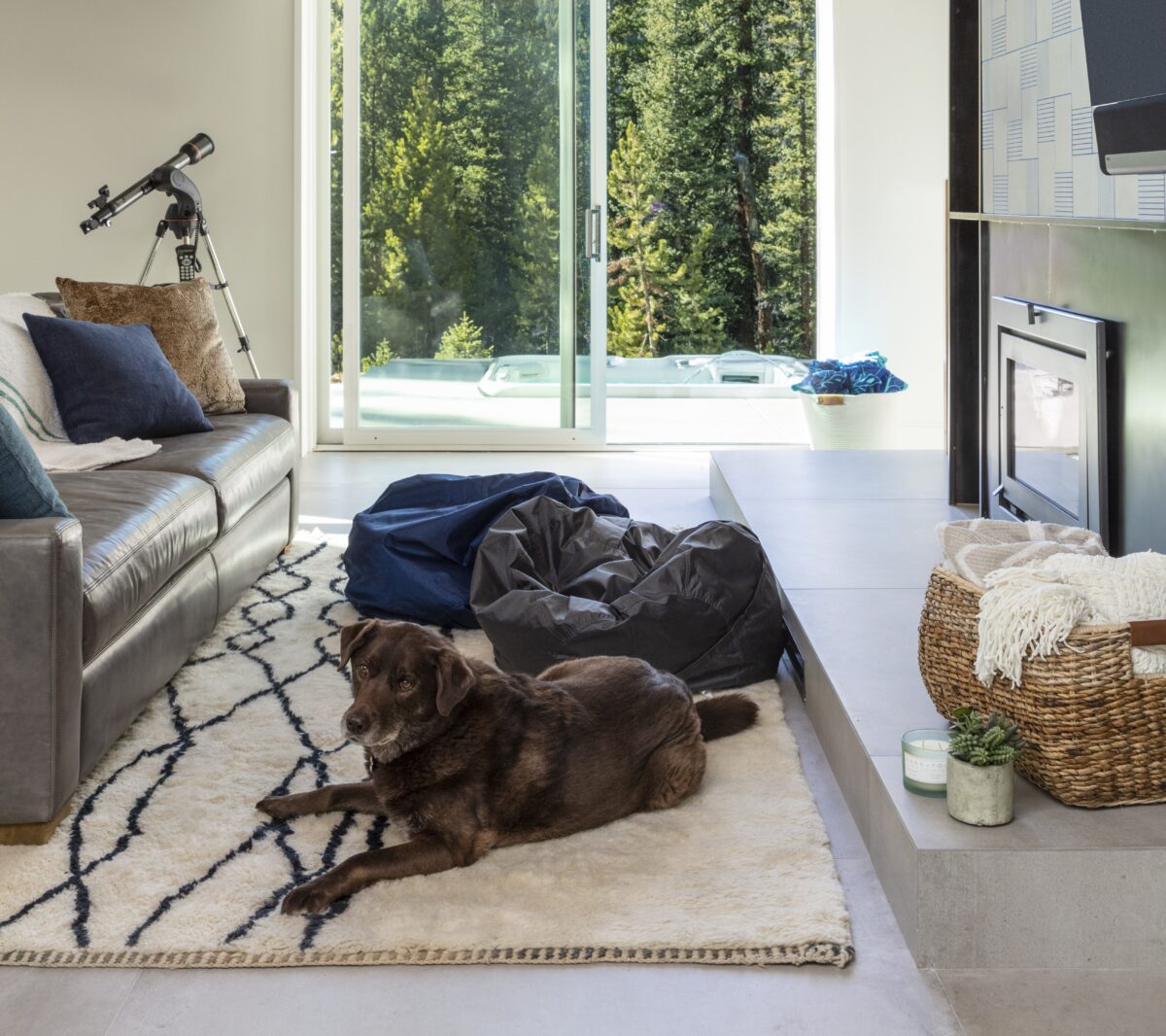The fear of falling is a deep-seated fear within the minds of most animals. Choosing the best and safest non-slip floors for your home will help your pets feel more relaxed and secure, especially as they age and become less sure-footed. In this article, we will focus on great solutions for creating a non-slip surface in your home.
Surfaces to Consider
Carpet tile. Carpet can be gross, especially with pets. But carpet tile is practical because it can be removed, cleaned, and replaced easily. Flor is a company that makes link together carpet tiles to create area rugs of any size. These can be placed right over existing floors to create a safer, non-slip surface without replacing your current flooring. Use a carpet tile product to create a non-slip path for your pet throughout your home.
Washable area rugs and runners. Staying with the theme of placing something over your existing floor to cater to your pets, consider a washable area rug or runner. Ruggable makes rugs that can be thrown in the washer, but you can also consider other brands. Good Housekeeping ran an article about the 14 Best Washable Rugs, published on March 9, 2021. It’s a great reference! We recommend using rug pads under all rugs, so they don’t slip, as a slipping rug defeats the problem we are trying to solve.
A quick fix. If you’re looking for a quick fix to help an aging pet walk on a small section of floor, without the cost of a replacement floor or expensive area rug, try a rubber mat runner. These can be placed where a dog is going out or coming back in from outside and can provide special protection for wet paws.
Selecting New Flooring
If your floors are worn and ready to be replaced, we recommend looking into these two fantastic non-slip residential options:
- Non-slip vinyl. Vinyl floors are a popular option, and while they sound industrial, today’s vinyl products come in a wide variety of looks, feels, styles, and colors. Our favorite type is called “LVT” or Luxury Vinyl Tile. Many LVTs are sold as wood-look planks. Non-slip options are available, but not all vinyl is non-slip, so please select and purchase carefully!
- Tell the flooring sales team that you require a non-slip product.
- Ensure it can be used in a bathroom, which means the product is non-slip when wet.
- Ask for a non-scratch product with a thick wear layer.
- Get a sample so you can touch and feel the texture.
- Shop around to find the floor source with the best non-slip options.
- Non-slip porcelain tile. Tile does not come to mind for many people when they think of non-slip. But tile surface technology has come a very long way. Daltile, a popular U.S. manufacturer, has a new designation called StepWise. This indicates a product with superior slip resistance, even when wet. Tile can be used throughout a home, as it is a practical and durable solution, as long as slip-resistant products are used.
- If you do use tile, as I did throughout my home, provide plenty of area rugs for comfort for your pet, as tile can be hard underfoot.
Lessons Learned
- Not all floors are non-slip when wet. For example, linoleum is often sold as a non-slip floor, but it can be very slippery when wet.
- Cork floors, which are naturally non-slip, aren’t durable enough for pet claws.
- Rubber floors seem to be ideal. Rubber products are both soft and non-slip, but unfortunately, they’re still hard to find in a residential market. We are hoping that more rubber floors will be available soon for homeowners, as they’re now a go-to for commercial Fear Free flooring.
- Hardwood floors are notoriously slippery, especially for older pets and especially when wet.
You can accomplish a non-slip surface for your pet on any budget. Whether you’re starting fresh with new flooring or covering some areas of your existing floors, you can create a safer space for your pet, and your two-legged family members as well!
This article was reviewed/edited by board-certified veterinary behaviorist Dr. Kenneth Martin and/or veterinary technician specialist in behavior Debbie Martin, LVT.








